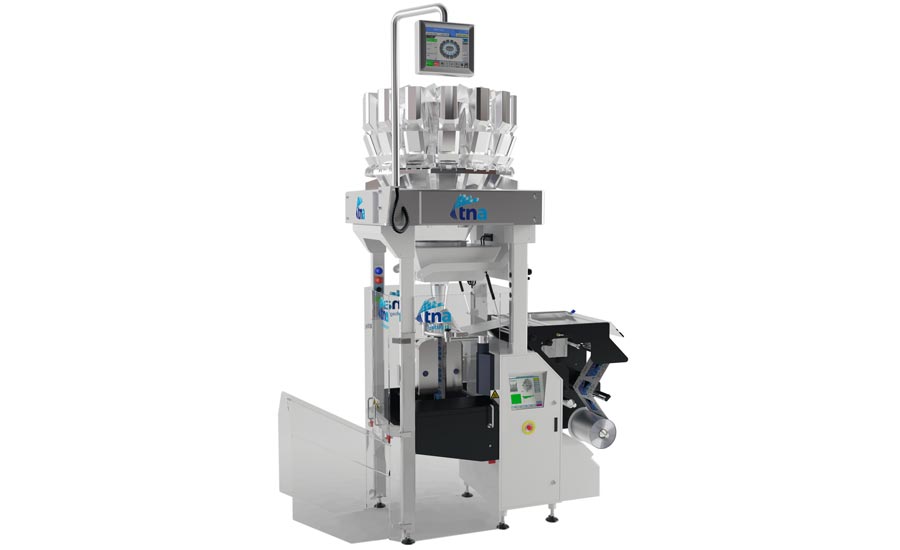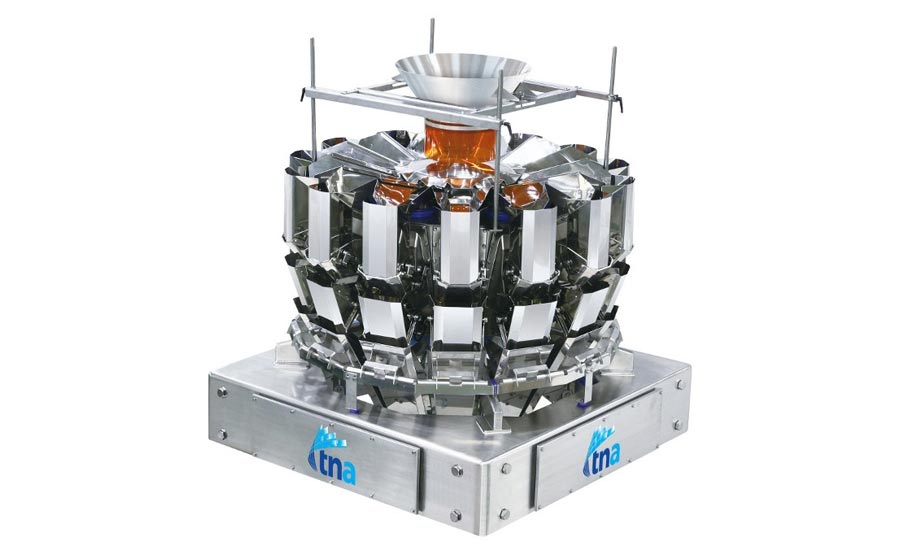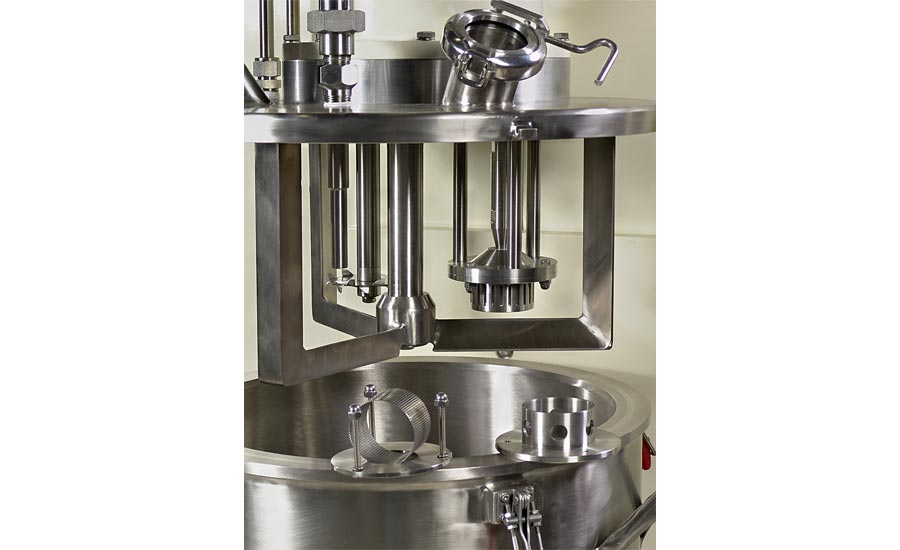CANNABIS PRODUCTS | NOVEMBER 2020
Streamlining Cannabis Food and Beverage Production
Working closely with equipment manufacturers can help companies new to cannabis R&D continuously improve their process.

courtesy of tna solutions
As more companies enter the cannabis-infused food and beverage product development and processing market, they will seek a high level of quality control (QC) to help ensure product safety and labeling accuracy. In this process, working with trusted equipment suppliers will remain instrumental to delivering on key processing variables to keep finished products within specification.
UNIQUE CONDITIONS
Since developing and producing cannabis-infused foods and beverages involves working with active ingredients like cannabinoids, companies need to have tight control over ingredient specification and specified dosage levels.
Cannabis-infused foods and beverages require proper mixing and homogenization to incorporate the active ingredient and obtain uniform potency. “Optimal processing of cannabis-infused foods and beverages is dictated by basic parameters like solubility, viscosity, shear, temperature, vacuum/pressure, batch size, stability, etc.,” says Christine Banaszek, sales manager, Charles Ross & Son Company, Hauppauge, NY. “What’s unique to this growing industry are the added challenges upstream: safe and efficient extraction of cannabis constituents from plant material, choosing a compatible delivery system, and formulating a stable and appealing end product that addresses bioavailability and predictable dosing. In short, this is a field where vigorous R&D is especially crucial.”

courtesy of tna solutions
Banaszek encourages companies launching a cannabis-infused product development company to utilize scalable R&D equipment. “Laboratory high-shear mixers, for instance, allow food technologists and chemists to conserve ingredients while following an effective homogenization method that can be reliably replicated in pilot or production scale,” she says. These “plug-and-play” mixers that can prepare superior emulsions and dispersions in volumes up to 4 gallons at a time. “For viscous applications that require heating/cooling and deaeration during the batching process, a lab-scale multi-shaft mixer is recommended.” She notes up to 10 times of the R&D volume is a comfortable scale-up ratio for pilot batches of product. From there, equipment manufacturers can work with production companies to establish parameters for full-scale production.
Quality control starts with quality ingredients. “The primary challenge is sourcing quality ingredients at the time when origin, extracting, and process control methods are still being developed and improved,” says Teri Johnson, general manager, North America, tna solutions, Coppell, TX. “In the case of processing, dosing is critical. Product labels are mandated to be published with milligrams per serving, encouraging producers to implement quality systems that include testing to ensure accurate doses, as specified. For gummy CBD (cannabidiol) and THC (tetrahydrocannabinol) products, this is ensured by controlling the ingredients and the size of the gummy.”
Packaging is also a critical component of protecting and ensuring product quality through projected shelf life. “With packaging, the challenges are very similar to those of food packaging,” says Johnson. “Here, package format and film/barrier selection for shelf life, UV protection, appearance, sustainability, cost, and child-resistance are as critical as labeling to meet government regulations for each stock keeping unit (SKU). In addition, the cost of producing in low volumes is a challenge, as capital investment continues to be substantial.”
CONTINUOUS IMPROVEMENT
Equipment manufacturers can assist cannabis-infused food and beverage companies with scale-up recommendations to help ensure they achieve desired product quality consistently from batch to batch, says Banaszek. “Whenever practical, these recommendations should be confirmed through actual testing. Manufacturers that offer trial programs and rent-to-own options are great resources for cannabis start-ups in particular.”
Charles Ross & Son Company has one of the largest inventories of ribbon blenders available for immediate rental or purchase, says Banaszek. “These machines are typically used for dry applications, such as powdered supplements, baking mixes, beverage powders, sweeteners, coffee, tea, herbs, spices, and flour. By tailoring the blender to accommodate the cannabis active ingredient—whether in dry or liquid form—and conducting in-plant trials, companies can be assured of repeatability while getting a head-start on operator training.”

courtesy of tna solutions
Gummies are one of the top categories for cannabis, and the right equipment can help producers tightly control production. “Precision depositing is key to controlling the dose,” says Johnson. “Once the appropriate amounts of each ingredient are mixed, compounded, and quality-tested, it is subsequently pumped to the depositor. The depositor uses pumps and nozzles to feed and control the right amount of liquid into each gummy mold.”
Equipment suppliers can also offer flexibility to support varying formats and film required for packaging, notes Johnson. “They can include features such as printing on the bag to allow the same film to be used for multiple SKUs. Overall, equipment suppliers can offer a full range of production volumes, providing a solution for low- and high-volume producers.”
Producers of cannabis-infused foods and beverages need to control the entire production process, adjusting process steps as required during a run in order to keep products within specifications. “Equipment manufacturers can integrate these as automated functions with reported results,” says Johnson. “This means machines need sensors, cameras, diagnostics, and integration to plant networks. For example, during the packaging process, a barcode reader can be included to ensure the correct film is being used for the SKU being produced.”
Johnson notes other ways to boost product quality and consistency include setting and enforcing process control limits for each process step and communicating these to the suppliers of your equipment, integrating equipment control into production plant networks for data communication, using a checkweigher to ensure the package product weight matches the label.
“Eliminating contaminants in the process stream by integrating sensors and detectors can help ensure finished product safety,” says Johnson. This might include installing optical sorters and a metal detector, two processes frequently included on gummy production lines, she notes.

courtesy of Charles Ross & Son Company
“Automate, control, and measure as many functions as possible,” suggests Johnson. “Use data in a feedback loop to continuously control, adjust, and improve the process.”
Equipment manufacturers can guide developers who are completely new to food and beverage processing in terms of equipment selection and help them explore the various options available, such as 3A- or BISSC-approved design, FDA-compliant elastomers, sanitary valves and fittings, high polish on stainless steel wetted parts, custom PLC controls with data management package, and many others factors, notes Banaszek.
For the latest insights on developing cannabis-infused food and beverages, visit cannabisproductsmagazine.com
This relationship then continues as production comes online, with opportunities for continuous improvement to improve product quality. “Identify each bottleneck and problematic step in the entire process and discuss these with your equipment vendor in detail,” says Banaszek. “Issues related to method of raw material addition, dispersion or emulsification, heating/cooling, deaeration, discharge, overall cycle time, and cleaning are routinely resolved by partnering with a well-experienced equipment manufacturer.”
Looking for a reprint of this article?
From high-res PDFs to custom plaques, order your copy today!








